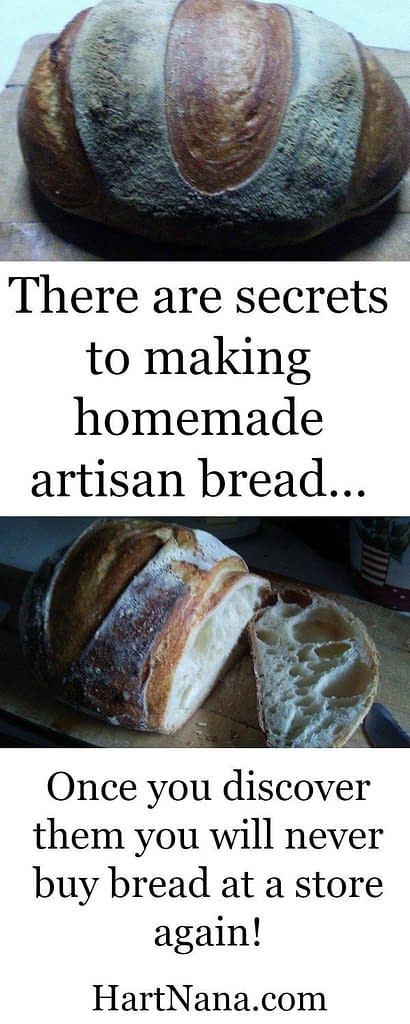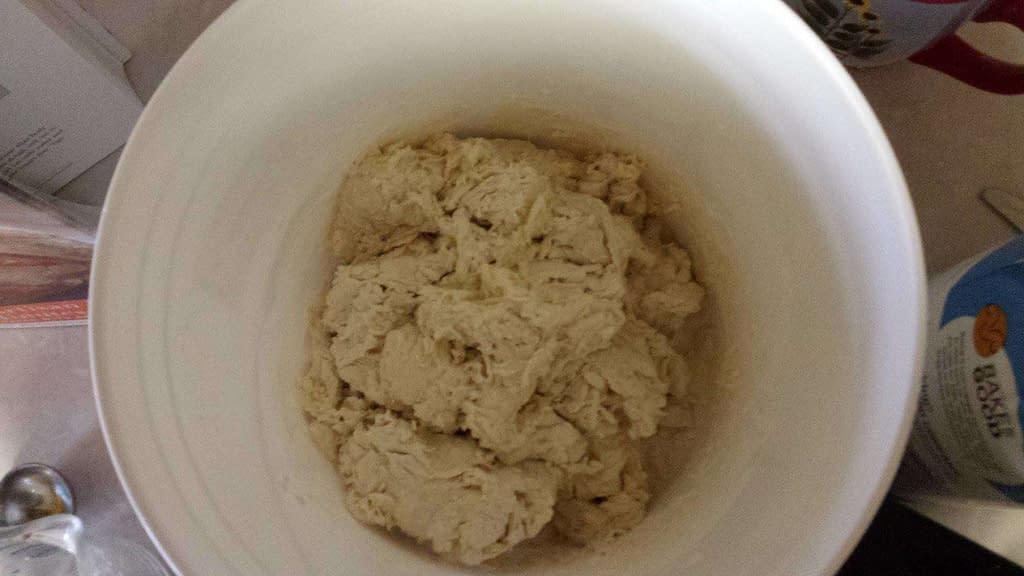There are secrets to making artisan bread that once mastered will allow you to make consistently amazing homemade artisan bread.
For ten years I have studied and practiced to understand the secrets to making artisan bread. Only recently have I been able to create repeatable successes.
Four Secrets To Making Artisan Bread
- The right tools
- Understanding how to create the perfect crumb
- Creating a crust properly
- Weighing out your ingredients.
Quick links to finding the right tools
Bread lame – cool knife for making the slits in your bread
The Right Tools For Making Artisan Bread
Discovering how to use a cast iron dutch oven for bread baking was a turning point in my bread making career. Though now I can bake bread without the dutch oven and get a good crust, using one makes life much easier. Using a dutch oven traps the moisture in giving your bread a beautiful bounce. Dutch ovens also produce a crisp crust.
One of the quirkiest tools I have discovered has got to be the Danish Dough Bread Whisk! Funny looking doesn’t begin to describe it. But effective? Heck yeah.

The Secret To Making The Perfect Crumb
There are only a handful of things you need to get right to create the perfect loaf of artisan bread. Getting the crust and crumb right. It never ceases to amaze me that you can mix flour, yeast, water and salt together and get so many different results.
Using a kitchen scale to weigh out your ingredients will help you get the right proportions.
Starting with a shaggy dough, pull the dough up and around five or six folds. Turn it over, then let it rest for 30 minutes. Do this five or six times. After that let the dough rest and rise before putting it in the oven.
This is what shaggy dough looks like:

Secrets to making artisan bread – sourdough recipe step by step
The ingredients:
2 cups sour dough starter
3 cups water
1 tablespoon salt
7 cups bread flour (flour makes a big difference. (I like to use King Arthur Bread Flour)
add the sour dough starter to the bowl, then dump the flour on top add the salt to the flour – stir the flour and salt together before adding the water and stirring those all into the sourdough starter.
Start with 6 cups of flour and see if it is shaggy at this point. You want the dough to be rough but not soupy.
Mixing the Dough
Do you see how she pulls the dough and then puts it back? That is how you get that incredible crumb. Personally, I like to do this about 6 times over the course of several hours. The recipe I use is only sour dough, flour, water and salt. Though I do believe I might try the addition of the rye and whole wheat with the barley malt syrup.
Those baskets make a super cool design on the finished loaf! Make sure to put a lot of flour on the baskets though so that sticking isn’t such a big problem.
Though there doesn’t seem to be much rise to the bread when you first put it in the oven, If you follow the directions on kneading/stretching the dough you will get the wonderful open crumb structure. You bread pops with the steam produced by either using a baking stone and roaster or a Dutch oven.
The best way to make homemade artisan bread it to start it the night before and work on it the following day. Though if you have a warm kitchen, and start early the task can be completed in one day.
Click the button to get step by step directions to make a sourdough boule

 Find this on Amazon:
Find this on Amazon:
Can this dough be made in a bread machine
I never use a bread machine but think you might not get the results you are hoping for. Artisan breads are a little messing around then lots of waiting. Kind of every time you go by you turn it on all sides then let it rest.
Do you grease the inside of the Dutch oven?
Nope, just dump it right on in there. It won’t stick if your dutch oven is well seasoned.
Could this beautiful bread being baked without a Dutch Oven? Just on a baking rack?
Yep. You can make this on a rack with a pan – cast iron is best. Put some water in a hot pan underneath when you put the bread in to get the steam action a dutch over provides
How long do you let it rest after the loaf has been formed please?
About 15 to 30 minutes or so depending on how warm it is where you are proofing
Could this bread be baked in a slow cooker?
I haven’t tried it that way. I am not sure his it would work. If you decide to experiment let us know his it turns out please
How much ground black pepper? 4 tbs chopped basil – is that tablespoons or teaspoons?
That is 4 tablespoons of basil and about 1 teaspoon of black pepper or more to taste
What on earth is the scoop and sweep method!?
It’s the method described in the video as a way to prepare the dough for baking (as opposed to kneading).
I am not seeing the video. Can you give me a link? Also recipe
Calls for salt but directions don’t seem to say anything about salt.
Maybe I missed it, but what are the “secrets”? It appeared that you were giving us some tips that you had learned from you experience. Thank you. The recipe looks delicious.
The secret is in the method of folding and shaping the dough. There is a difference in the resulting crumb when one uses different methods of kneading. Yes it could be considered a tip. Secrets often become tips once you recognize them, because by definition once you now something it isn’t a secret.
I make this recipe regularly and it’s both easy and so delicious. It makes a large bread which I slice after baking and put in freezer bags and freeze till we’re ready to eat and enjoy. It’s a real winner.
Is instant yeast ok to use instead?
yep, instant yeast will work too
At what temp should be baked and for how long?
I bake my bread at 425 – wait for the oven to come to temperature first then put the bread in. And I squirt (carefully not to hit the glass) water into the oven. The close the door and keep it closed for at least 15 minutes
For all new bakers who want consistency please forget the measuring cups and start using a scale even for the liquids.
I don’t use a scale, and have been making bread for years – far more important in my opinion to get a feel for what the dough should look like where you are baking. Different climates and seasons require different flour and water ratios. These days I usually use the 3, 2, & 1 method 3 cups of flour, 2 cups of water 1 tsp salt and about 3/4’s cups of sourdough starter.
Salt is listed in the ingredients, but I don’t see it referenced in the directions. Is the full amount added when you mix the yeast and water?
No mix the salt with the flour
I don’t see where to put the salt. Also, confused about putting half the flour mixture, letting it rise, etc., then dusting the remaining on top. that would be 3cups. Am I misreading this?
When I make bread I first add the sourdough, (I take it out of the fridge the day before and feed it a couple times) then I add 3 cups of flour right on top of the sourdough starter to the flour I add 1 tsp of salt. I mix the salt into the flour to distribute it and then I add 2 cups of warm water. Stir it all together so the dough is shaggy, no smooth. After an hour I wet my hands then fold the dough in the bowl a couple times so the top is smooth, then let it sit and rise for a few hours then for 2 baguettes or one big boule heat the oven to 425. Once the oven comes to temp, I score the bread and then put in oven for 30 mins or so.
Can this dough be left to rise 12-18 hours? Then baked in Dutch oven
yes, I’d put it in the fridge for part of that time though
Can you use fresh garlic?
absolutely!